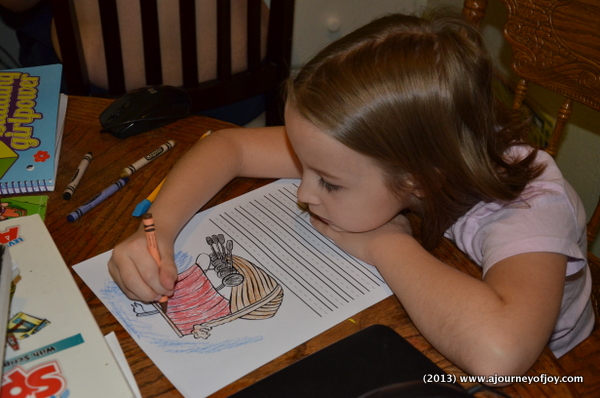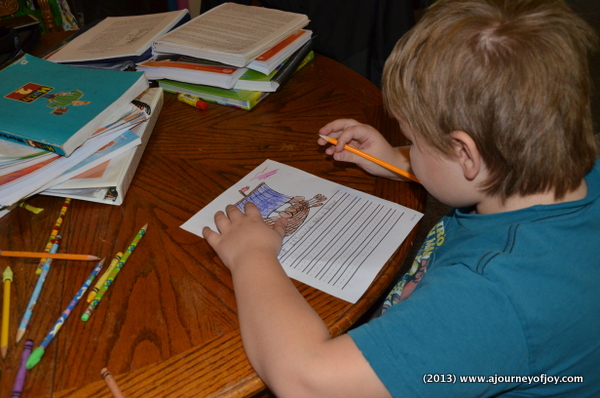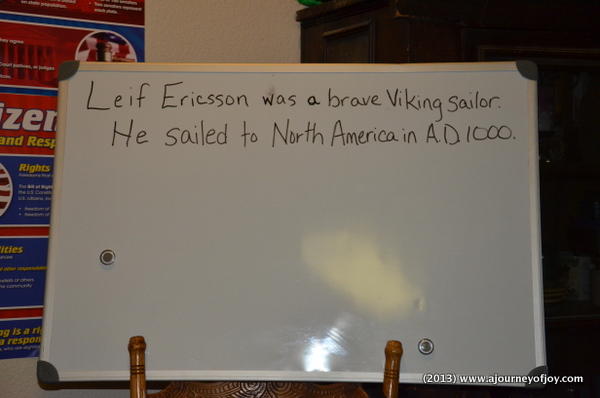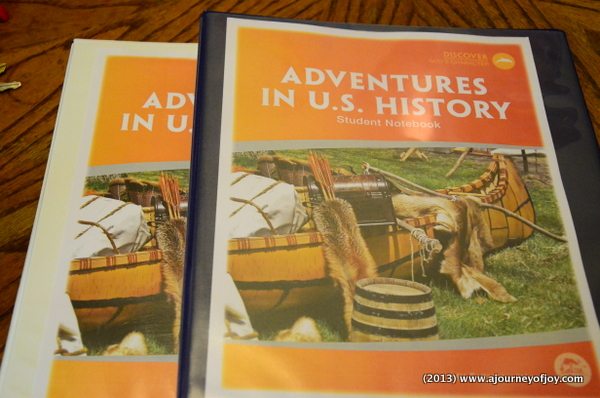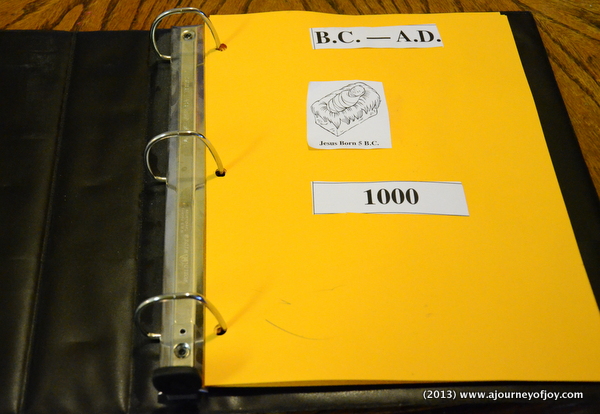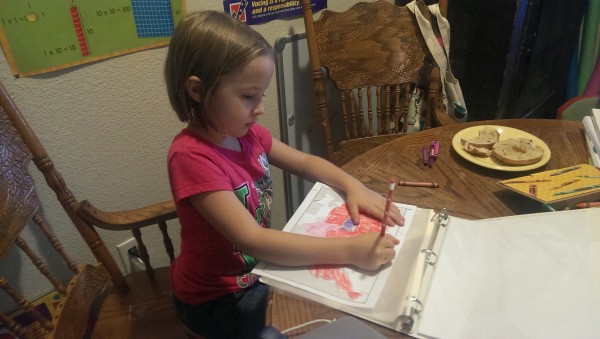Follow my blog with Bloglovin
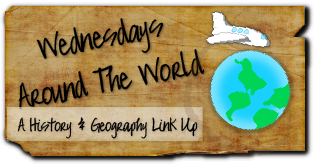
This week on Wednesday’s Around the World, I am sharing with you about Leif Ericsson and the Vikings. Who is Leif Ericsson and what does he and the Vikings have to do with studying the United States? Leif Ericsson was a Norseman, who lived in the far north of Europe. They had a hard life in the area they lived, because the weather could be brutal, with very cold temps, winds and snow. They were sometimes called Vikings, which just means exploring. They explored to find food for those times that they ran short of food. They traded with others, but sometimes they had to steal and they even looked for new places to live.
The Vikings used large boats that could go very fast with the unique sail that had. When the wind wasn’t blowing, they had a large oar that many men could pull to make the boat go. The large boat had a dragon head on the front and a dragon tail on the back. The dragon was very intimidating to those people that the Vikings came across. It filled them with fear and scared them a lot. As the Vikings moved around they created colonies as they explored. A lot of the Vikings, including Leif Ericsson’s dad, settled on land a land that is now called Iceland.
It was always a dream of Eric the Red, Leif’s dad to find a better place to live for him and his family. They hit the open waters and found a place west of Iceland and called it Greenland. Although it was very similar to Iceland, he named it Greenland in hopes that the name would bring more people to settle. However, due to a famine, people kept going to Iceland, instead of Greenland. One a particular day when the weather was awful, a Viking ship accidentally was blown off course and missed Greenland. They kept sailing even further west and came to unfamiliar land. They sailed down the coast, hoping to see something that would remind them of Greenland. They never did see anything they recognized, so they turned around and sailed back east. After 4 long days on the sea, they finally reached Greenland. They told Eric the Red what they had seen and his son, Leif overheard them. Leif wondered why they did not go ashore and explore the land. As Leif continued to get older, he never forgot that story.
One day, Leif told his dad his was heading out on the sea, towards the west to find this land. On the 4th day of his voyage, Leif and his crew caught sight of the land. At first, he did think it looked like Greenland, but as they continue to sail down the coast, he noticed that the land began to change. Leif and his crew went to the shore and started exploring. Leif called this land Vine-land. They stayed their through the winter and then returned to his dad and the people of Greenland. He told them all about the rich land they had found. Soon, other Vikings followed him to this new land and they set up a settlement. The settlement only last a few years due to the battles with the Indians that lived there. Vine-land, the place that Leif Ericsson discovered is known today as, Newfoundland, Canada.
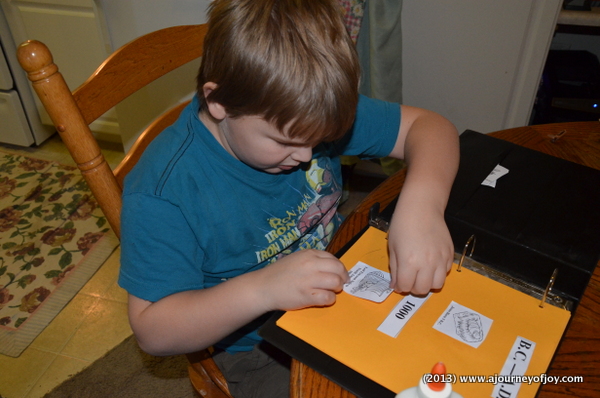 The kids and I had a fun time learning about Leif Ericsson, his family and the Vikings. We learned that Leif had discovered what is now known as Newfoundland, Canada in North America. This was the first time that someone discovered North America in A.D. 1000.
The kids and I had a fun time learning about Leif Ericsson, his family and the Vikings. We learned that Leif had discovered what is now known as Newfoundland, Canada in North America. This was the first time that someone discovered North America in A.D. 1000.
We looked on our world map and found Norway, Sweden, Finland, Iceland and Greenland. We then kept following our finger all the way west and right to Newfoundland, Canada in North America.
My kids and I are learning a lot and enjoying the lessons in the Adventures in U.S. History from My Father’s World.
What have you been studying about in History and Geography? Link up with us and share!
